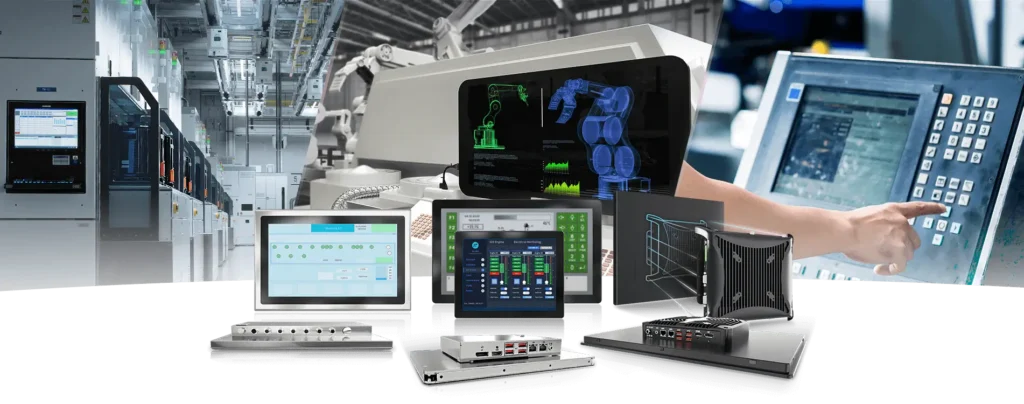Introduction
Touch technology has revolutionized how we interact with devices, but not all touch interfaces are created equal. Two popular options dominate the market: custom touch panels and standard touchscreens. While both serve the basic purpose of facilitating interaction, they differ significantly in design, functionality, and application.
Understanding these differences is crucial for businesses and individuals looking to implement touch technology in their products or services. This article explores the unique characteristics of custom touch panels and standard touchscreens, compares their benefits and limitations, and provides guidance on selecting the best option for your specific requirements.

Custom Touch Panels
Definition and Features
Custom touch panels are specifically designed and tailored to meet unique user requirements. Unlike off-the-shelf standard touchscreens, custom panels offer flexibility in terms of size, shape, material, interface integration, and performance features.
Key features include:
- Advanced touch sensitivity options (e.g., multi-touch, gesture control).
- Customizable screen dimensions and resolutions.
- Integration with specialized software or hardware.
Benefits of Custom Touch Panels
- Tailored Solutions: Perfectly aligned with specific project or industry needs.
- Enhanced User Experience: Personalized designs ensure seamless interaction and intuitive operation.
- Durability: Options to include high-quality materials for rugged environments.
- Brand Differentiation: Unique designs that set products apart in competitive markets.
Applications in Various Industries
Custom touch panels are widely used in industries where standard options fail to meet specialized demands. For instance:
- Automotive: Advanced in-car displays and navigation systems.
- Healthcare: Medical equipment requiring precise touch functionality.
- Industrial: Machinery with unique operational interfaces.
Standard Touchscreens
Definition and Features
Standard touchscreens are pre-designed, mass-produced panels available in common sizes and specifications. They are versatile and suitable for general-purpose applications but lack customization options.
Key features include:
- Basic touch functionality, such as single-touch or limited multi-touch.
- Standardized sizes for tablets, smartphones, or kiosks.
- Limited adaptability to specific software or hardware systems.
Limitations of Standard Touchscreens
- Generic Design: Cannot accommodate unique requirements or environments.
- Restricted Functionality: Limited options for advanced features like gesture recognition or custom interfaces.
- Durability Issues: Often not suitable for extreme environmental conditions.
Common Uses of Standard Touchscreens
Standard touchscreens are ideal for consumer electronics, kiosks, and simple point-of-sale (POS) systems, where cost efficiency and standardization are priorities.
Comparison Between Custom Touch Panels and Standard Touchscreens
Differences in Design and Functionality
- Custom Touch Panels: Fully adaptable to specific needs, with flexibility in design, interface, and material.
- Standard Touchscreens: Limited to predefined specifications and functionalities.
Cost Implications
- Custom Touch Panels: Higher initial investment but long-term savings through optimized performance and durability.
- Standard Touchscreens: Cost-effective upfront but may incur additional costs in specialized applications requiring modifications.
Factors to Consider When Choosing
- Application Needs: Evaluate whether a unique interface is required.
- Budget: Balance upfront costs against long-term benefits.
- Environment: Assess durability and performance in specific operating conditions.
Case Studies: Examples in Action
Automotive Industry
Custom touch panels power advanced infotainment systems, providing sleek, integrated designs that enhance user convenience and aesthetics.
Healthcare Sector
Medical equipment benefits from precise, durable custom panels designed to meet stringent hygiene and performance standards.
Retail Environments
Retailers often use standard touchscreens for POS systems, while high-end stores may implement custom touch panels to deliver personalized customer experiences.
Conclusion
Summary of Key Points
Custom touch panels offer unmatched flexibility, enhanced user experience, and industry-specific solutions, making them ideal for specialized applications. In contrast, standard touchscreens provide a cost-effective, versatile option for general uses.
Recommendations for Choosing the Right Option
When deciding, consider your application’s specific requirements, budget, and long-term objectives. Businesses with unique demands or those operating in demanding environments will benefit most from custom touch panels. For more generic applications, standard touchscreens offer a reliable and affordable solution.
Common Questions
- What are the main advantages of custom touch panels over standard touchscreens?
Custom panels provide tailored solutions, advanced functionality, and improved durability. - How do custom touch panels improve user experience in comparison to standard touchscreens?
Custom designs enhance usability by aligning with specific user needs and operational contexts. - What are the key factors to consider when deciding between custom touch panels and standard touchscreens?
Key factors include application requirements, budget, and operating environment. - Are custom touch panels more expensive than standard touchscreens?
Yes, custom panels often have higher upfront costs but offer long-term savings through better performance and durability. - In which industries are custom touch panels most commonly used?
They are prevalent in automotive, healthcare, and industrial sectors due to their specialized needs.
This comprehensive guide equips you with the knowledge to choose between custom touch panels and standard touchscreens effectively. Whether your goal is functionality, cost-efficiency, or market differentiation, understanding these options will help you make the best decision for your business.

